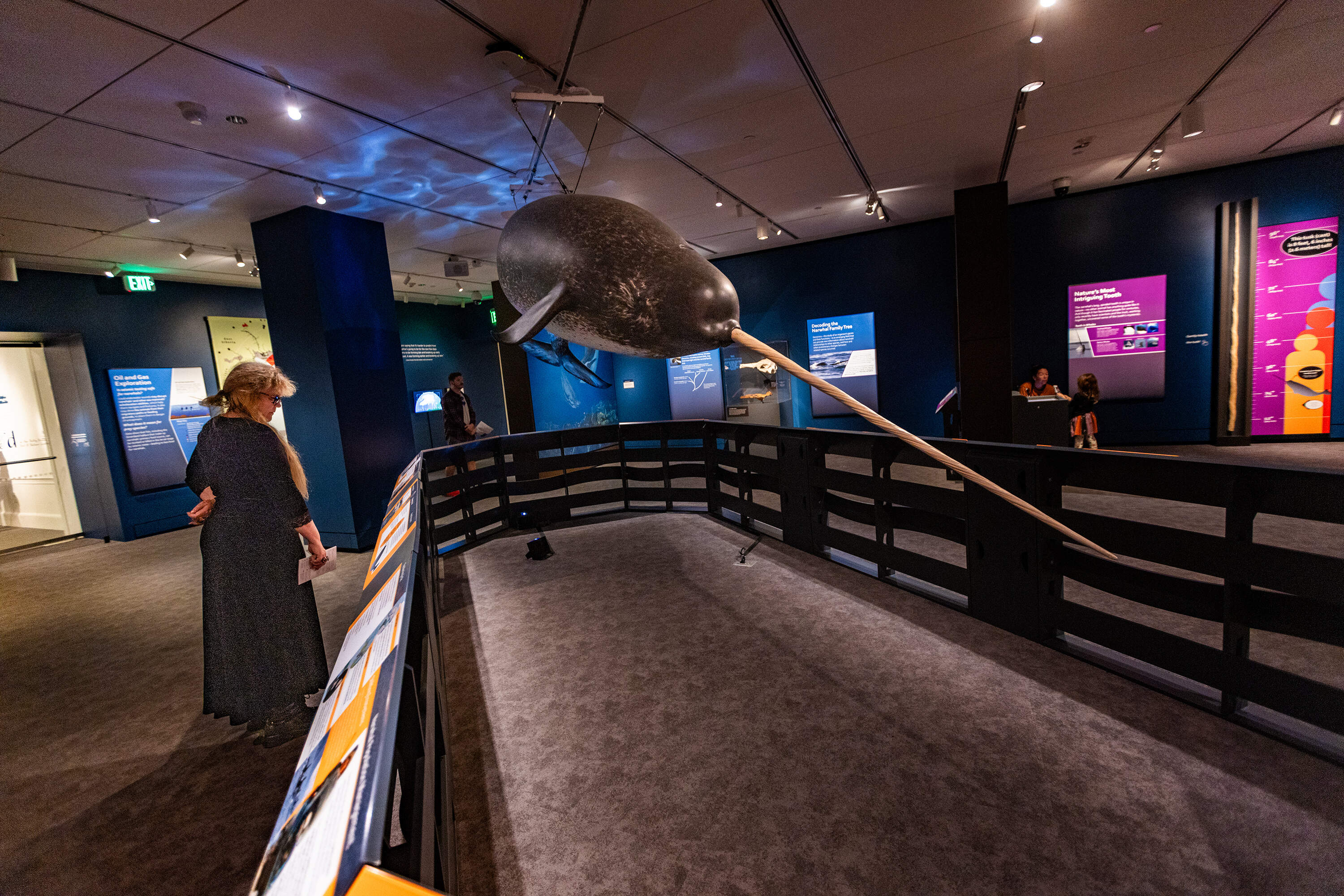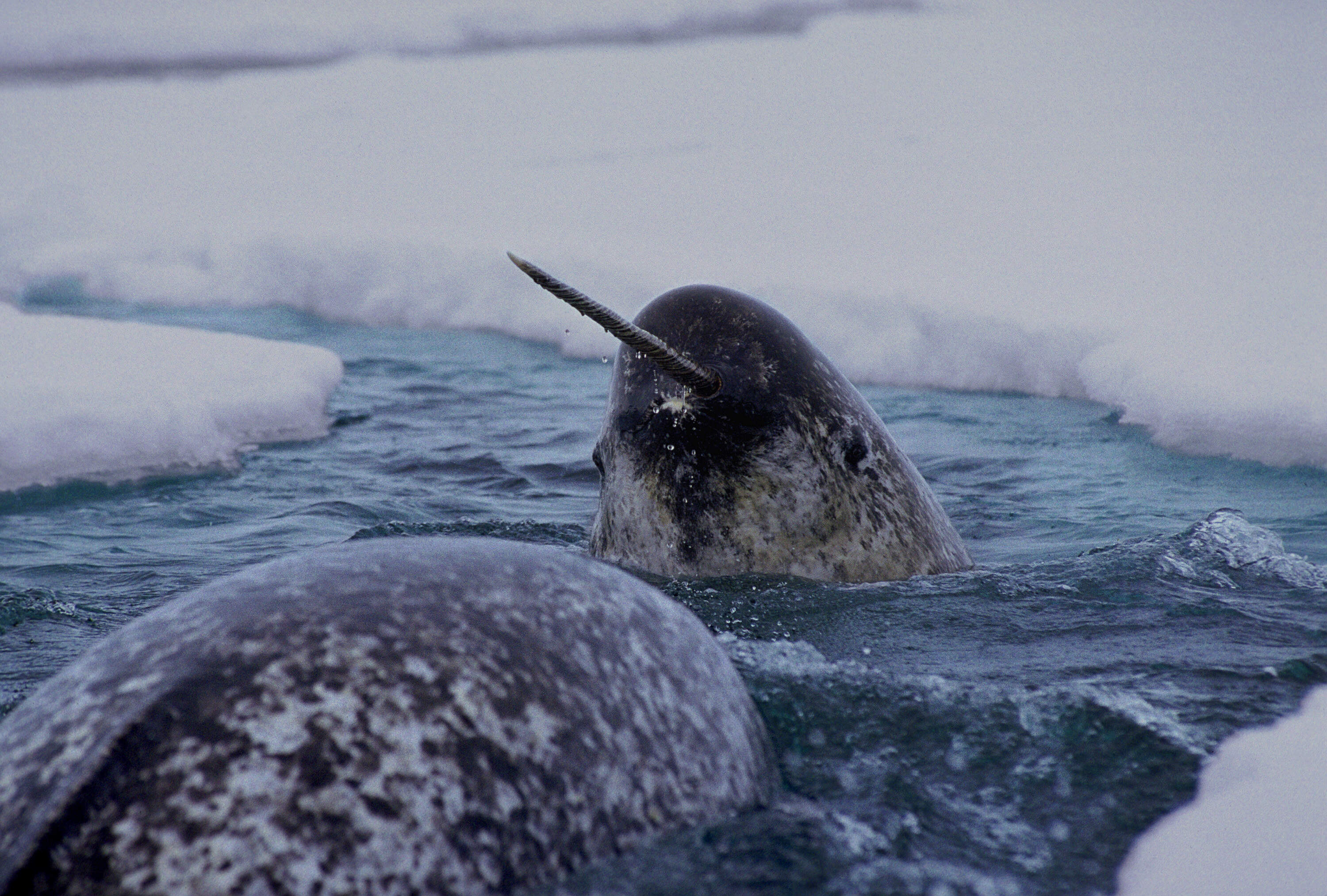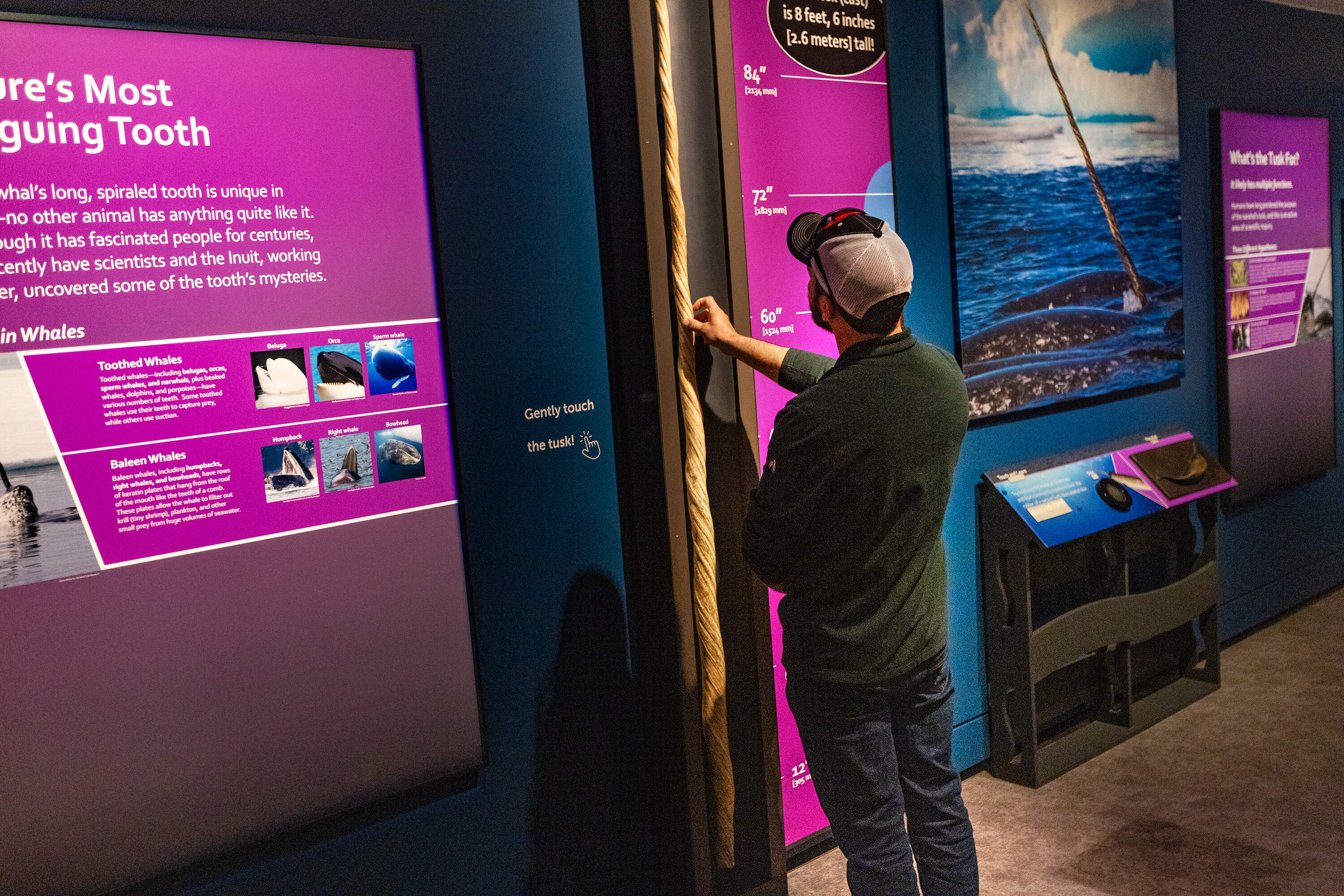Narwhals have fascinated and confounded people for hundreds of years. Now an exhibition at Salem’s Peabody Essex Museum is diving into the thriller, historical past and science of those elusive tusked “unicorns of the ocean.”
As guests enter the museum’s Artwork and Nature Middle they’re confronted with a query:
“Are narwhals actual?”
Jane Winchell understands why lots of people don’t assume they’re. She’s the middle’s director and coordinating curator for the Smithsonian Establishment’s touring exhibition “Narwhal: Revealing an Arctic Legend.”
“Most of us won’t ever get the chance to see a stay narwhal,” she mentioned, “and that’s compounded by the truth that they don’t survive in captivity.”
Narwhals can solely stay in icy, Arctic waters, which provides to their mystique. Then there’s popular culture. Stuffed animals, clothes, a tote bag and youngsters’s books in a glass show case reaffirm the narwhal’s fanciful nickname, unicorn of the ocean. “I really like this picture of a narwhal wanting a bit grumpy,” Winchell mentioned laughing, “and he is holding up a banner in entrance of him saying, ‘not a unicorn.”

A photographic copy of a medieval tapestry on an adjoining wall that includes that horned, horse-like creature makes the age-old connection. “There’s each indication that the narwhal tusk is what fueled the imagery of the unicorn,” Winchell mentioned.
Scandinavian merchants hunted narwhal and bought their tusks as “unicorn horns” to royalty who believed they possessed magical, protecting powers. “Queen Elizabeth I purportedly had a unicorn horn — narwhal tusk — valued at 10,000 kilos within the 1500s,” Winchell mentioned, “which was equal to the worth of a fort.”
Carvings and sculptures by Inuit artists from the museum’s assortment depict extra practical narwhals. However the bulk of this exhibition is science-driven as a part of the museum’s Local weather and Surroundings Initiative.

The gallery’s centerpiece is a life-sized, 18-foot-long fiberglass narwhal suspended from the ceiling. “The tusk can actually be from 5 toes to over 9 toes,” Winchell defined. “And customarily it is solely the males which have a tusk.”
Seems the narwhal’s tusk is definitely a extremely delicate tooth.
“In case you can think about this 9 foot, seemingly laborious, rigid tooth, having roughly 9 million connections with its ocean setting, it is actually staggering,” Smithsonian analysis scientist Martin Nweeia mentioned.

By his groundbreaking work, he discovered the versatile tooth is a posh sensory organ that may detect salinity and temperature modifications within the water.
Nweeia helped create this touring exhibition that debuted on the Smithsonian in 2017. He has devoted his educational profession to finding out the narwhal’s tooth as a result of he’s additionally a dentist.
“I’ve been on the planet of human enamel for thus lengthy — and utilizing animal examples — and this one clearly was probably the most outrageous,” Nweeia mentioned. He additionally teaches on the Harvard Faculty of Dental Medication. “As a dentist I believed this whale wanted a greater story.”

The exhibition shares the mammal’s story via interactive shows, beautiful documentary images and sound recordings of narwhals vocalizing that immerse guests within the narwhal’s altering world.
“I’ve been within the water with them,” Nweeia mentioned, “It’s a humbling expertise, you notice how majestic, how type they’re.”
Narwhals use echolocation to speak and hunt deep beneath the ice cowl. Nweeia’s group labored intently with Inuit individuals whose neighborhood has relied on looking narwhal for hundreds of years.
“The Inuit and conventional data is invaluable to our work,” he mentioned, “They’re actually full collaborators within the analysis.”
Nweeia additionally mentioned narwhals exhibit how the dramatically diminished polar ice cap (down greater than 30% since 1979 in line with NASA) — and elevated noise air pollution from ship visitors and blasting for pure assets — are affecting the Arctic. “All of these issues are inflicting modifications not just for narwhal, however actually for the online of life up there,” he mentioned.
Winchell hopes guests to the Smithsonian touring present take away a deeper understanding of how local weather change is impacting the Arctic. “This offers us a window into the hazards that that represents,” she mentioned.
Nweeia has made it his mission to draw extra individuals to affix what he calls “narwhal nation.” And he believes the mammals’ trending popular culture cache helps to bolster the ranks.
“I might say half the adults on the planet do not even notice that that is an animal on the planet with them,” he mentioned, “In case you discuss to the common 6 or 7 12 months previous, they’re in all probability with it. Narwhals are the brand new cool animal.”
“Narwhal: Revealing an Arctic Legend” is on the Peabody Essex Museum via June fifteenth.

